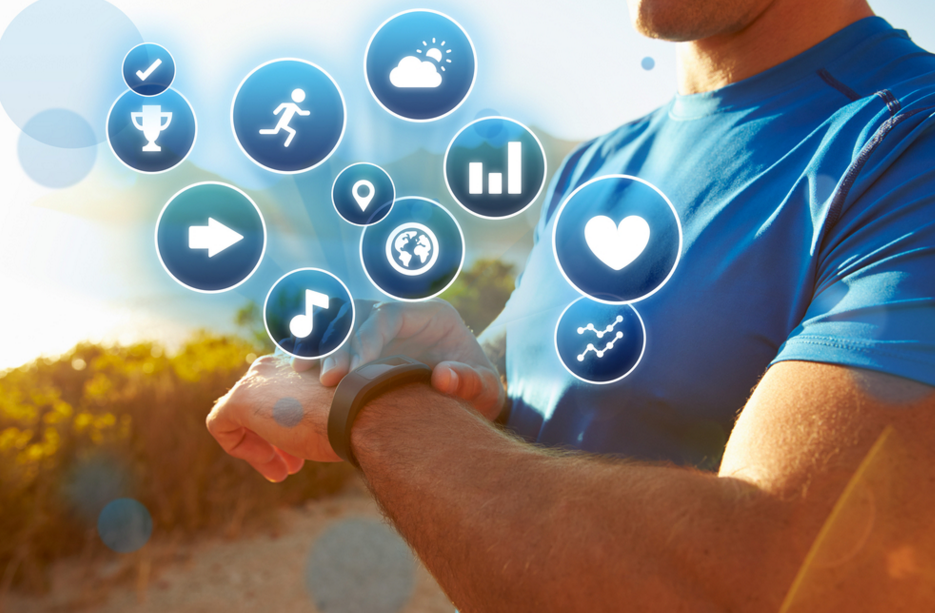2 Models for Data Monetisation in Healthcare
When it comes to healthcare, collecting, storing and using data is a very complex process. Although user information is sensitive, we can leave behind us pieces of data without even knowing it, especially when using health apps. Whether it is the number of steps we take each day, our heart rate during a run or blood sugar levels for a diabetic, this information is tracked and collected by apps on our phone or on secure cloud systems.
The problem is that these “secure” cloud systems may actually not be that secure. Usually, the data stored on our phones is non-identifiable, meaning that if leaked, the information does not identify of the user. That said, once the data is transferred to the app provider’s secure cloud it is stored with the user’s other personal information.
This makes the information especially sensitive because it links the user to their health information. Big corporations and governments are particularly interested in making use of this type of information-gathering technology for multiple reasons. For instance, pharmaceutical companies could use user information to track prescription drug use and side effects after they go to market.
In addition, governments could use the user data to build epidemiologic models to predict disease pathways. Thus there is both a supply of user information and the demand for larger amounts of health related data.
Big corporations and governments are particularly interested in making use of this type of information-gathering technology for multiple reasons.
For instance, pharmaceutical companies could use user information to track prescription drug use and side effects after they go to market. In addition, governments could use the user data to build epidemiologic models to predict disease pathways. Thus there is both a supply of user information and the demand for larger amounts of health related data.
Today, these organisations often retrieve the data without clearly informing the user. Therefore, the user is deprived of their right to make a thoughtful decision about with whom they share personal health information. Moreover, even if the user agrees to share their information, they do not receive any monetary compensation for data. This raises ethical question about the price of health data when it is sold around the world between big companies.
This article details two different ways in which health data could be monetised. The first is the direct result of the facts mentioned above whereas the second one addresses a problem encountered by big companies that need interpreted medical data to build artificial intelligence.
Model 1 of Data Monetisation in Healthcare
The first model is centred on blockchain technology. This technology allows users to store information, track it and decide who can access it. This last characteristic is possible with smart contracts, pieces of code that execute actions automatically when certain conditions are met.
Hence, blockchain technology can help users control, share and monetize their health information. “There are companies underway that are building your personal identity in a black box on blockchain” reveals Don Tapscott in his book, Blockchain Revolution. He describes blockchain as a black box where users can consolidate all their data in one place and then decide what to do with it.
With this new technology, the user can choose what data they wish reveal, with whom they share it and whether or not they sell it or give it away for free. The user is placed back in the centre of the health system.
By using blockchain, the data producers (users) and the data buyers can interact in a secure environment, which is particularly important when we talk about personal health data.
When it comes to health data,
users and buyers form two halves to a perfect whole. Users produce mass quantities of data in their daily life, information which is vital to organisations such as pharmaceutical companies who need data during research and development and clinical trials to evaluate the potential for new prescription drugs. Through smart contracts, data providers and data buyers can be matched.
As a user, one has the right to decide which information they share and with whom they share it, since transactions with data buyers should be transparent. Researchers or pharmaceutical companies should have to specify what kind of data they need and why, allowing the user to make an informed and thoughtful decision.
Equally, data buyers should make sure that the data they purchase corresponds to their exact needs. Therefore, query systems should be built on top of the blockchain. Query systems allow buyers as well as users to search for their own needs and matched with corresponding counterparts.
Moreover, if we assume, under this model, that data is collected by IoT devices or by the medical community, and then registered on the blockchain, buyers can verify the data they receive is authentic. Access to trustworthy data is a necessary condition for efficient medical research and scientific advances. Blockchain has the potential to create a marketplace for data buyers and providers to exchange authentic data in a secure way by using smart contracts.
Model 2 for Data Monetisation in Healthcare
The second model for data monetisation in healthcare is radically different from the first one and much more controversial.
Big companies, such as IBM, work with artificial intelligence to create systems able to diagnose patients based on their collected medical data. However, AI is extremely complex and in order for these systems to work, technology must take several steps before it can create a reliable artificial intelligence. These steps include: Collecting raw data, doctors interpreting the raw data, scientists teaching the system how to use the interpreted data for diagnosis (machine learning) and, finally, testing the model.
Many companies like IBM are placed at the end of the chain, as they build artificial intelligences, such as Watson, that are able to suggest a diagnosis based on the medical information they receive. However, these companies do not have the medical expertise to interpret documents such as ECGs, blood tests or MRIs that are used for machine learning. Therefore, here is a lack of structures that interpret and provide big companies with enriched data that can be used to build artificial intelligence.
This model enables medical professionals to analyse and label raw data and sell it to companies. Indeed, these organisations possess all types of medical information but they do not have the medical knowledge required to interpret the large quantities of data and reach the proper diagnosis. The model could be managed with smart contracts that allow companies to buy the enriched data from the medical organizations.
The main issue in this model
is that the user is left out of the equation entirely. In this way, the user would not be able to control who uses their personal information and they would not receive any compensation. That said, while the goal of AI is not to find out the identity of the user, but rather, through machine learning, to train the AI to improve future diagnosis reports, the ethical considerations still stand.
Thus, before this model is put in place, we must decide if it is ethical for a medical community to earn money by analysing user data in order to sell it to big companies without the user’s approval
The benefit of this model is the fact that the enriched data is only used to improve medical diagnosis through artificial intelligence. This goes hand in hand with the theory that AI can reduce human errors and therefore provide a better outcome for the user. However, patient information is a very precious asset and it is complicated to make sure that such information is only used for machine learning purposes and not for commercial goals.
Conclusion
These two models address very different problems concerning medical information: The first shows that while users produce large amounts of data, they do not receive any compensation from the companies that use their collected data. The second model, however, shows that although companies possess medical information, it is raw form as un-interpreted data that cannot be used for machine learning as such and needs to be first enriched by medical professionals.
Perhaps these two models could be combined to include the user and allow them, as well as the doctors that enrich the data, to receive a financial compensation for their work. Indeed, chances are that part of the users would agree to share their medical information with doctors and companies if it is with the objective of improving diagnosis. Therefore, the chain would start with a user uploading his data to a cloud system or the “black box” as described by Don Tapscott.
A smart contract would allow him to pick which data the user shares with medical professionals and receive compensation when medical professionals send the enriched data to a final buyer company, such as IBM. Each actor of the chain could update the blockchain when they receive the data in order to ensure traceability and enforce the smart contract.
Both models are still theoretical and with few real initiatives to use blockchain for data collection and analysis. Indeed, dealing with medical data is particularly sensitive and demands multiple legal and ethical considerations. When talking about health information, there are very strict rules companies have to respect in order to ensure the patient’s privacy and data security.

My name is Anca Petre and I am a Pharm. D and Business double degree candidate at Université Paris-Saclay and INSEEC Business School in London and Paris. In my own work, I primarily focus on the crossroads between healthcare and digital technologies. I am currently working on a research about the possible applications of Blockchain in Healthcare and I contribute to Blockchain Age and Intelligent HQ.
I particularly enjoy working the sectors’s startup environment. I have previously worked at e-ssencials, a startup which develops digital solutions for patients with chronic diseases. I have also participated in three hackathons to help develop and further innovate the healthcare circuit.
I worked at Sanofi in the Biotechnologies Department where I successfully managed to reduce the production time by half for several products.
At university, I am the founder and president of the Speak Up ! Association which allows over 500 students to improve their public speaking skills.










